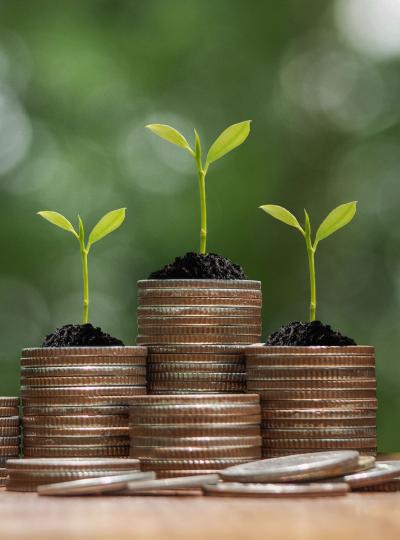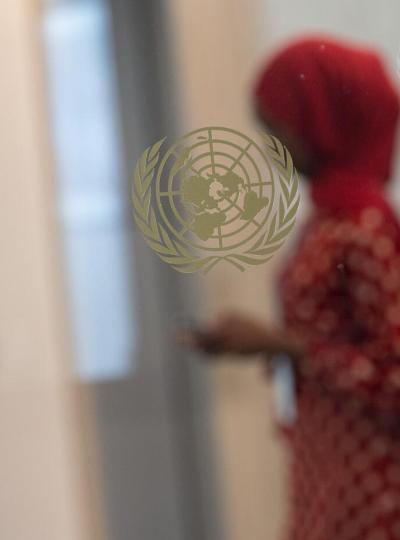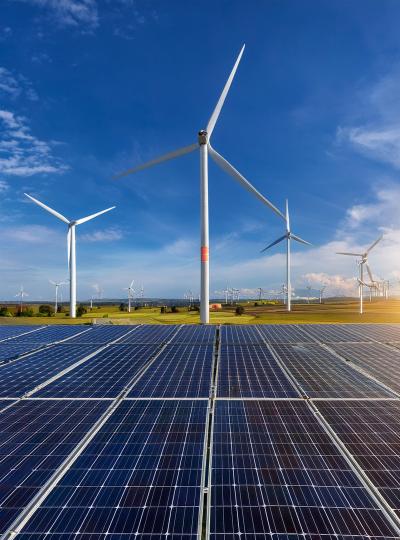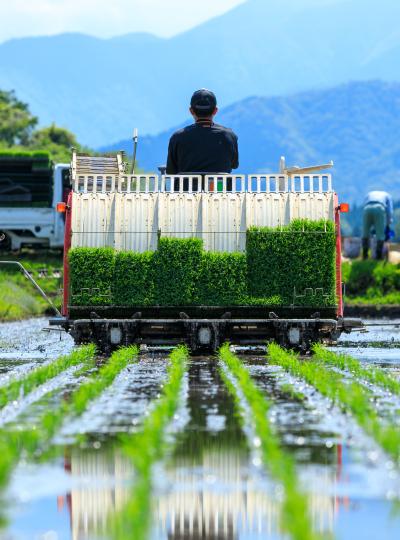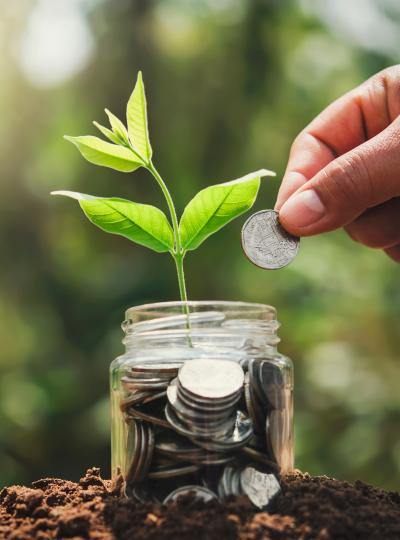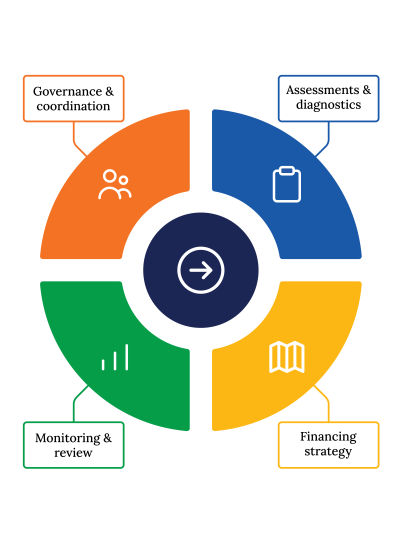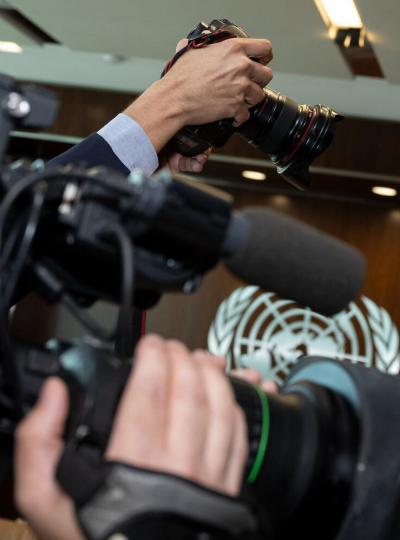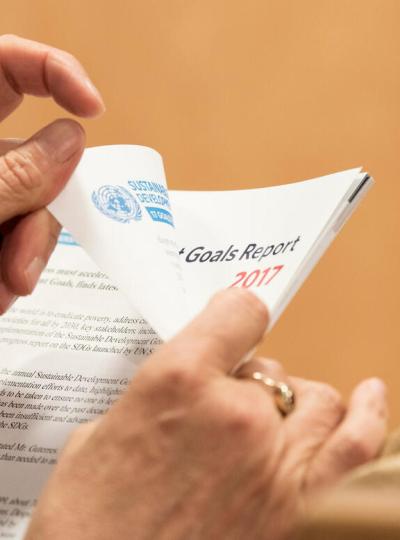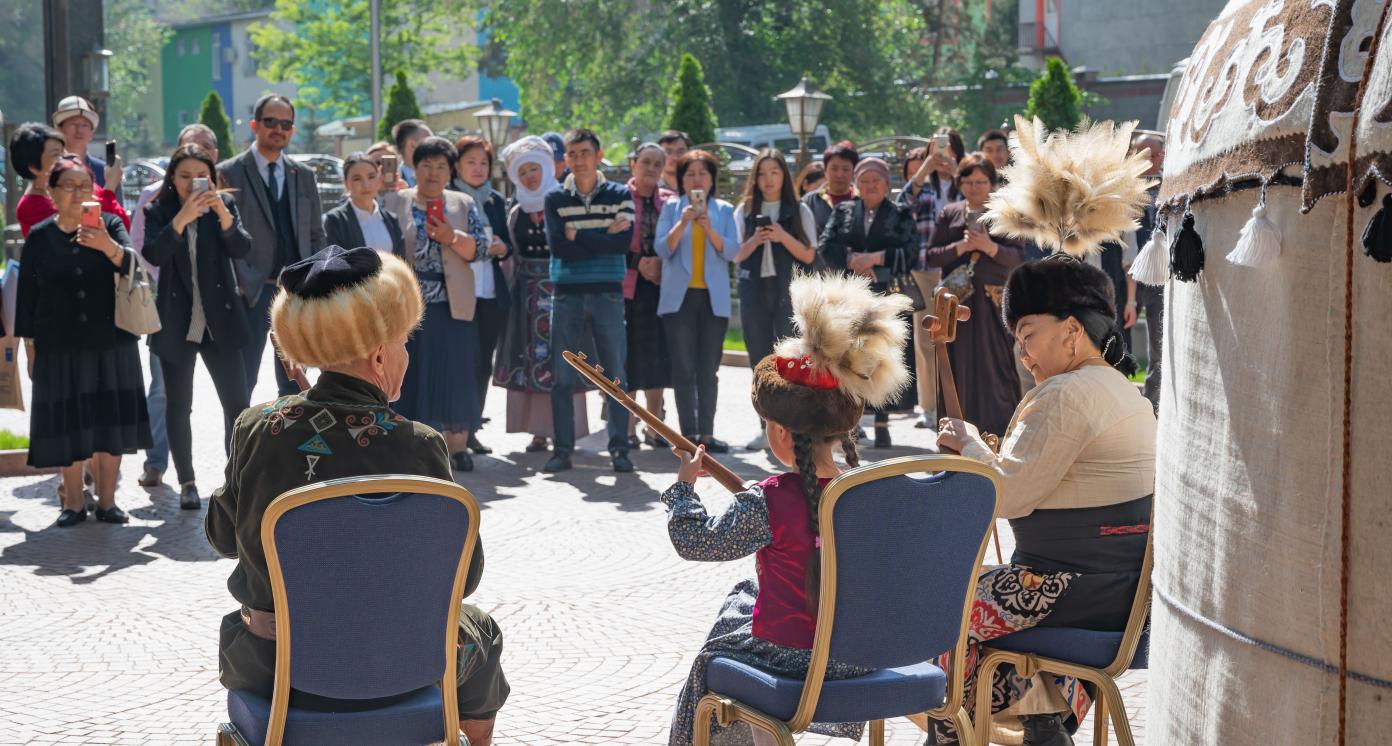Community-based and Cultural Tourism with a Focus on Yurt Camps
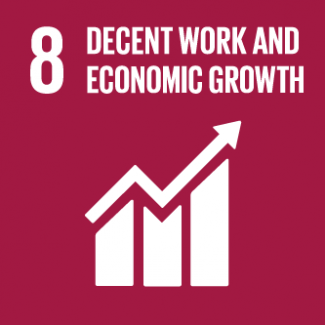
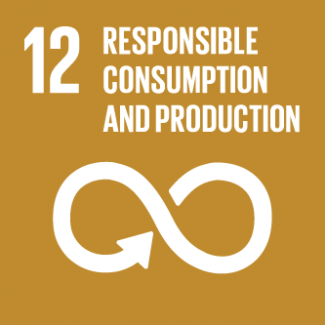
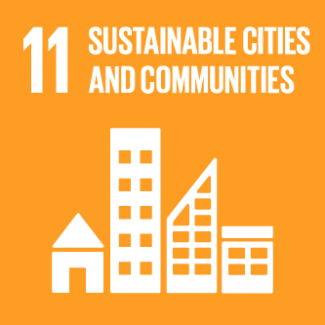
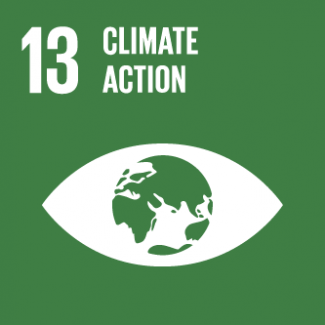
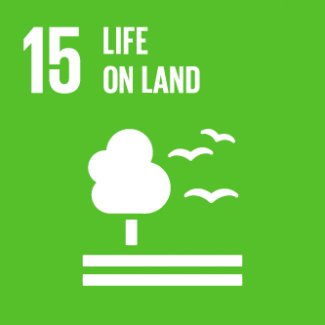
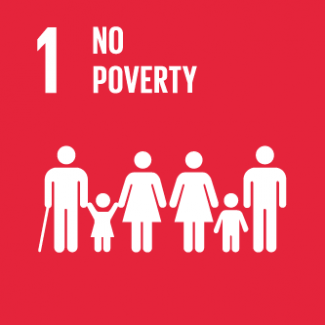
Business Model Description
Invest in accommodation facilities such as yurt camps, bed and breakfast (B&B) facilities, small local hostels, and guesthouses operated by local entrepreneurs and communities that utilize sustainable waste management, wastewater management, and renewable energy power at the premises and provide add-on cultural and eco-experiences, including excursions around historical places, horse riding tours, visiting nomad festivals, eating and drinking local food, and hiking to the mountains.
Expected Impact
Reduce the environmental burden on the environment, encourage the participation of local communities and create a unique touristic Kyrgyz identity.
How is this information gathered?
Investment opportunities with potential to contribute to sustainable development are based on country-level SDG Investor Maps.
Disclaimer
UNDP, the Private Finance for the SDGs, and their affiliates (collectively “UNDP”) do not seek or solicit investment for programmes, projects, or opportunities described on this site (collectively “Programmes”) or any other Programmes, and nothing on this page should constitute a solicitation for investment. The actors listed on this site are not partners of UNDP, and their inclusion should not be construed as an endorsement or recommendation by UNDP for any relationship or investment.
The descriptions on this page are provided for informational purposes only. Only companies and enterprises that appear under the case study tab have been validated and vetted through UNDP programmes such as the Growth Stage Impact Ventures (GSIV), Business Call to Action (BCtA), or through other UN agencies. Even then, under no circumstances should their appearance on this website be construed as an endorsement for any relationship or investment. UNDP assumes no liability for investment losses directly or indirectly resulting from recommendations made, implied, or inferred by its research. Likewise, UNDP assumes no claim to investment gains directly or indirectly resulting from trading profits, investment management, or advisory fees obtained by following investment recommendations made, implied, or inferred by its research.
Investment involves risk, and all investments should be made with the supervision of a professional investment manager or advisor. The materials on the website are not an offer to sell or a solicitation of an offer to buy any investment, security, or commodity, nor shall any security be offered or sold to any person, in any jurisdiction in which such offer would be unlawful under the securities laws of such jurisdiction.
Country & Regions
- Kyrgyzstan: Issyk-Kul Oblast
- Kyrgyzstan: Chui Oblast
- Kyrgyzstan: Osh Oblast
Sector Classification
Services
Development need
In recent years, Kyrgyzstan’s economy has been increasingly driven by service sectors. The service sector occupies more than 50% in the GDP structure. The real growth rate in this sector over the past three years has averaged 6.6%. 55.8% of the total number of employed citizens worked in the service sector in 2022. The share of tourist sector to GDP in 2023 was 3,6% (1, 2, 3).
Policy priority
According to the Program for Sustainable Development of Tourism in the Kyrgyz Republic for 2025-2030, it is expected that the share of tourism in the GDP of the Kyrgyz Republic will reach 7% by 2030 and Kyrgyzstan will be among the top 50 countries in the competitiveness index in the field of tourism and travel (4).
Gender inequalities and marginalization issues
One-third of the population in Kyrgyzstan lives below the national poverty line, and 2 in 3 of the poor live in rural areas. Although many tourist sites are located in rural areas, where 65% of Kyrgyzstan's population resides, only 7% of the active labour force is formally employed in the tourism sector (5, 6).
Investment opportunities introduction
Tourism in the Kyrgyz Republic has enormous potential for the development of eco- and tradition-oriented tourism due to its rich nature and cultural heritage (9).
Key bottlenecks introduction
Some surveys show that the majority of the employees in the tourism sector are youth aged 17-25. However, labour migration, which mostly affects people aged 18-29, hinders the labour market and, thus, the development of the sector (16, 17).
Hospitality and Recreation
Development need
Limited transport connectivity, insufficient airport infrastructure, and underdeveloped roads constrain tourism growth. Remote areas lack Wi-Fi, quality facilities, reliable water, and energy services. The tourism sector faces poor waste management due to household waste dumping, lack of land use regulations, and irregular garbage collection (7, 9)
Policy priority
The National Development Programme 2018-2040 supports tourism development through infrastructure projects, sustainability principles, and consideration of local community interests. The Green Economy Programme for 2024-2028 aims to improve regulations to enhance waste management in tourist areas (14, 15).
Gender inequalities and marginalization issues
Women’s participation in the labour force is 56% compared with 80% for men. In rural areas, women tend to work in lower-end value chains with less predictable incomes (10). Only 1.5% of young women and only 1.8% of young men study services, tourism, and information security in secondary vocational education (13).
Investment opportunities introduction
In 2022, the tourism sector attracted around USD 50 million in foreign direct investment (FDI). According to the National Investment Agency in the tourism sector, opportunities exist in such areas as ski resorts, recreational tourism, cultural tours and others (11, 12).
Key bottlenecks introduction
Kyrgyzstan's tourism development is limited by short seasonality due to its harsh continental climate, with peak “sun, sea, and sand” activities lasting only three months. Additionally, the average duration of visits lasted only three days (7, 11).
Hotels and Lodging
Pipeline Opportunity
Community-based and Cultural Tourism with a Focus on Yurt Camps
Invest in accommodation facilities such as yurt camps, bed and breakfast (B&B) facilities, small local hostels, and guesthouses operated by local entrepreneurs and communities that utilize sustainable waste management, wastewater management, and renewable energy power at the premises and provide add-on cultural and eco-experiences, including excursions around historical places, horse riding tours, visiting nomad festivals, eating and drinking local food, and hiking to the mountains.
Business Case
Market Size and Environment
USD 100 million - USD 1 billion
5% - 10%
The Compound Annual Growth Rate (CAGR) for the tourism sector in Kyrgyzstan will be 8.8% between 2023-2033. In 2022, total visitor spending in the tourism sector was KGS 44 billion (USD515 million) (20).
Indicative Return
15% - 20%
The local tourist company reports the average rate of return in the sector is 15-20% (8).
Investment Timeframe
Short Term (0–5 years)
One complex comprised of 16 yurts that has wastewater treatment at the premises, small solar power to charge appliances, and uses recyclable materials for guests such as toothbrushes and soap dispensers, can provide a payoff in four years (18).
Ticket Size
< USD 500,000
Market Risks & Scale Obstacles
Business - Supply Chain Constraints
Market - Highly Regulated
Impact Case
Sustainable Development Need
Due to the increasing number of tourists, there are issues of environmental pollution, particularly from household waste, due to non-compliance with visitation and environmental protection rules in specially protected natural and recreation areas (9).
In Kyrgyzstan, tourists face challenges when moving between tourist locations. Eco-trails, along with pedestrian paths, and road surfaces are substandard (including inclusiveness standards for people with disabilities, women with children, and pregnant women) or completely absent (14).
Although Kyrgyzstan is abundant in natural wonders, it lacks a unique tourism identity and faces a shortage of eco-trails and nature-based attractions (8, 18).
Gender & Marginalisation
While 51% of men and 49% of women were employed in Kyrgyzstan's tourism sector in 2022, women reportedly faced limited access to economic participation, resource allocation, and decision-making processes (14).
Expected Development Outcome
Developing yurt camps and cultural tourism helps create eco-routes and a distinct tourist identity by tapping into the potential of the nomadic culture and the pure nature of Kyrgyzstan.
The development of tourism locations nationwide enhances transport infrastructure and improves overall mobility for both the local population and tourists.
Community-based and cultural tourism that promotes ecological principles enhances sustainable consumption practices and waste management near tourist sites.
Gender & Marginalisation
Community-based and cultural tourism improves the involvement of local rural communities, particularly women, in the economic development of the tourism sector.
Primary SDGs addressed

8.9.1 Tourism direct GDP as a proportion of total GDP and in growth rate
8.5.2 Unemployment rate, by sex, age and persons with disabilities
3,6% in 2022 (3).
In 2023, unemployment reached 4.1%, with 5.2% among women and 3.3% among men. The highest unemployment experienced by people aged 20-29, was 8.2% in the same year (22).
The Program for Sustainable Development of Tourism in the Kyrgyz Republic for 2025-2030 aims to increase the proportion of tourism in total GDP to 7% by 2030 (4).

12.b.1 Implementation of standard accounting tools to monitor the economic and environmental aspects of tourism sustainability

11.4.1 Total per capita expenditure on the preservation, protection and conservation of all cultural and natural heritage, by source of funding (public, private), type of heritage (cultural, natural) and level of government (national, regional, and local/
Secondary SDGs addressed



Directly impacted stakeholders
People
Gender inequality and/or marginalization
Planet
Corporates
Indirectly impacted stakeholders
Public sector
Planet
Outcome Risks
If eco-tourism facility locations are not strategically planned, this business model risks contributing to habitat degradation and overcrowding.
Impact Risks
If the construction of community-based tourist sites does not include adjacent infrastructure such as roads and trails, the impact of the business model may remain limited.
If the business model fails to employ the local population due to a lack of regional expertise, the expected impact of community-based and cultural tourism will be hindered.
Impact Classification
What
Community-based and cultural tourism, including yurt camps, boosts rural incomes, minimizes environmental harm, and enhances the country's tourism brand.
Who
Local communities, yurt camp operators, local service providers and producers, and the environment benefit from the expansion of sustainable tourism.
Risk
The availability of locally sourced personnel and weak road and transportation infrastructure may limit the expected impact of community-based and cultural tourism.
Contribution
Community-based cultural tourism adds to the mitigation of climate change by more responsible consumption and providing a sustainable source of income for local communities.
How Much
The development of cultural tourism helps the government to achieve the target of increasing the proportion of tourism in GDP to 7% by 2030 (4).
Impact Thesis
Reduce the environmental burden on the environment, encourage the participation of local communities and create a unique touristic Kyrgyz identity.
Enabling Environment
Policy Environment
The Program for Sustainable Development of Tourism in the Kyrgyz Republic for 2025-2030, 2024: provides for the development of sustainable tourism, including ecotourism, which allows for preserving cultural values (4).
National Development Strategy of the Kyrgyz Republic for 2018-2040, 2018: envisions tourism as a driver of sustainable economic development, fostering employment and income growth while prioritizing environmental management of natural landscapes and mitigating cultural disruptions (22).
The Program of the Government of the Kyrgyz Republic for the Development of Tourism for 2019-2023, 2019: focuses on sustainable tourism, preserving cultural values and identity, optimizing natural resource use, and promoting sustainable local employment (9).
Financial Environment
Financial incentives: Dos Credobank, Bailyk Finance, and Kyrgyzstan Bank offer loans between KGS 10,000 (USD 114) and KGS 8 million (USD 91,000) at 17-33% for up to 60 months for the development of resource-saving and green technologies in the local tourism business (28).
Other incentives: Community-based tourism could also be eligible for the proceeds from the Conservation Trust Fund (CTF) of the Kyrgyz Republic, including Debt for Nature Swap (DfNS) that seeks to mobilize financing for nature conservation and climate resilience (30).
Regulatory Environment
Law No. 34 On tourism, 1999: provides for state policy in the field of sustainable tourism and defines the legal, economic, social and organizational foundations of tourism (24).
Law No. 66 On investments, 2003: establishes the basic principles of the state investment policy, providing fair, equal legal treatment to investors and guaranteeing the protection of their investments in the economy of the Kyrgyz Republic (25).
Regulation on the procedure for providing land plots in state ownership, 2019: guarantees the provision of land plots owned by the state for the construction of socially significant facilities, including tourism and cultural purposes with investments of over KGS 1 billion (USD 11.4 million) (26).
Decree of the President of the Kyrgyz Republic "On Supporting Tourism Development in the Kyrgyz Republic", 2021: establishes provisions for the development of the National Council for Tourism Development and the Tourism Development Fund (27).
Marketplace Participants
Private Sector
Nomads Yurt, Ak Say Travel, Nomad's Land, Bel Tam, Feel Nomad, Karakol Yurt Lodge, Jaichy yurt camp, Jurten Camp Almaluu, Yurt Camp Zalkar, Rima Yurt Camp and others.
Government
Ministry of Economy and Commerce, National Investments Agency under the President, PPP Center, Department of Tourism, Tourism Development Fund.
Multilaterals
United Nations Development Programme (UNDP), State Secretariat for Economic Affairs (SECO), U.S. Agency for International Development (USAID), Gesellschaft für Internationale Zusammenarbeit (GIZ), Asian Development Bank (ADB), Japanese International Cooperation Agency (JICA).
Non-Profit
Non-Profit: Kyrgyz Community Based Tourism Association, The Kyrgyz Association of Tour Organizations.
Target Locations
Kyrgyzstan: Issyk-Kul Oblast
Kyrgyzstan: Chui Oblast
Kyrgyzstan: Osh Oblast
References
- (1) Ministry of economy and commerce of the Kyrgyz Republic. 2024. The service sector shows high growth rates. https://mineconom.gov.kg/ru/post/9988
- (2) Economist. 2023. More than half of employed citizens of Kyrgyzstan work in the service sector. https://economist.kg/ekonomika/2023/12/05/bolshie-poloviny-kyrghyzstantsiev-rabotaiut-v-sfierie-uslugh/
- (3) National Statistical Committee of the Kyrgyz Republic. 2024. Key indicators of tourism development. https://www.stat.gov.kg/ru/statistics/turizm/
- (4) Government of the Kyrgyz Republic. 2024. Program for Sustainable Development of Tourism in the Kyrgyz Republic for 2025-2030. https://koomtalkuu.gov.kg/ru/view-npa/4030
- (5) National Statistical Committee of the Kyrgyz Republic. 2023. Employed population by type of economic activity. https://www.stat.gov.kg/en/statistics/zanyatost/
- (6) IFAD. 2021. COSOP results review. https://www.ifad.org/documents/38711624/39485397/KGZ+-+CRR+report-final-30032021-cleanFormatted.pdf/719cd5de-da93-ce3d-6449-eb1abc6d700a?t=1630411603804 "7) University of Central Asia. 2017. Tourism Sector in Kyrgyzstan: Trends and Challenges. https://www.ucentralasia.org/media/bytfagur/uca-ippa-wp42tourismeng.pdf"
- (8) Stakeholder consultation with a tourism business association, September 2024.
- (9) The Government of the Kyrgyz Republic. 2019. The Programme of the Government of the Kyrgyz Republic for the Development of Tourism Sector for 2019-2023. https://cbd.minjust.gov.kg/12943/edition/925740/ru
- (10) UNDP. 2018. Gender Equality Strategy, 2018-2022. https://www.undp.org/sites/g/files/zskgke326/files/migration/kg/UNDP-in-Kygyzstan-Gender-Equlaity-Strategy-2018-2022_6May2019.pdf
- (11) Национальный статистический комитет Кыргызской Республики. 2022. Сфера туризма Кыргызской Республики в 2022 году. https://stat.gov.kg/media/files/705bc0dc-40a7-45b9-9a99-f20886fcf067.docx
- (12) National Investment Agency of the Kyrgyz Republic. 2024. Investment proposals. https://invest.gov.kg/ru/2021/12/07/test/
- (13) Национальный статистический комитет Кыргызской Республики. 2024. Женщины и мужчины Кыргызской Республики (2019-2023). https://stat.gov.kg/media/publicationarchive/dd79bce2-f315-4956-8fc5-52d3485c6aaf.pdf
- (14) Министерство Экономики и Коммерции. 2024. Программа развития зеленой экономики в Кыргызской Республике на 2024-2028 годы. https://mineconom.gov.kg/froala/uploads/file/3bd5db922cf87fc28a0f3cbeced8e2bbe286956c.pdf
- (15) Кабинет Министров Кыргызской Республики. 2021. Национальная программа развития Кыргызской Республики до 2026 года. https://faolex.fao.org/docs/pdf/kyr208595.pdf "16) UNFPA. 2021. Ситуационный анализ молодежи. https://kyrgyzstan.unfpa.org/sites/default/files/pub-pdf/situacionnyy_analiz_molodezhi_ru_0.pdf "
- (17) Erdem et al. 2019. Labor Force Analysis in Food and Beverage Establishments in Kyrgyzstanl: A Descriptive Study. https://www.researchgate.net/publication/334292619_Labor_Force_Analysis_in_Food_and_Beverage_Establishments_in_Kyrgyzstan_A_Descriptive_Study
- (18) Stakeholder consultations with a yurt eco-glamping tourism company, October 2024.
- (19) 24 KG. 2024. Ala-Kush yurt glamping site opened in Chon-Kemin valley. https://24.kg/english/295971_Ala-Kush_yurt_glamping_site_opened_in_Chon-Kemin_valley/
- (20) World Travel & Tourism Council. 2023. Travel & Tourism Economic Impact 2023. https://assets-global.website-files.com/6329bc97af73223b575983ac/647f138f1d118f97fa0fb4db_EIR2023-Kyrgyzstan.pdf
- (21) 24 KG. 2024. Более $479 миллионов дохода получено от туризма в первом полугодии 2024-го. https://24.kg/obschestvo/309464_bolee_479_millionov_dohoda_polucheno_otturizma_vpervom_polugodii_2024-go_/
- (22) National Statistical Committee. 2023. Indicator 8.5.2. https://sustainabledevelopment-kyrgyzstan.github.io/8-5-2/
- (23) Ministry of Justice of the Kyrgyz Republic. 2024. National Development Strategy of the Kyrgyz Republic for 2018-2040. cbd.minjust.gov.kg/act/view/ru-ru/430002
- (24) Правительство Кыргызской Республики. 1999. Закон Кыргызской Республики от 25 марта 1999 года №34 О туризме. https://cbd.minjust.gov.kg/201/edition/1389/ru
- (25) Правительство Кыргызской Республики. 2003. Закон Кыргызской Республики от 27 марта 2003 года №66 Об инвестициях в Кыргызской Республике. https://cbd.minjust.gov.kg/1190/edition/8226/ru
- (26) Правительство Кыргызской Республики. 2019. Положение о порядке предоставления земельных участков, находяхщихся в государственной собственности. https://cbd.minjust.gov.kg/157147/edition/13968/ru
- (27) Правительство Кыргызской Республики. 2021. Указ президента Кыргызской Республики от 17 декабря 2021 года УП №566 О поддержке развития туризма в Кыргызской Республике. https://cbd.minjust.gov.kg/5-9815/edition/1134011/ru
- (28) Pereto. 2020. Green Financing. https://pereto.kg/businesses-information?type=2
- (29) Национальный статистический комитет Кыргызской Республики. 2023. Туризм в Кыргызстане 2019-2023. https://stat.gov.kg/media/publicationarchive/dcd4da72-e4a3-40a0-b439-3a3442961574.xlsx
- (30) UNFCCC. 2024. The side Event "Catalyzing Conservation Financing: The Kyrgyz Republic's Conservation Trust Fund". https://mnr.gov.kg/storage/npa/files/288/14_2_%D1%84%D0%B8%D0%BD_COP29_KGZ_CTF_eng-clean-05.11.24-673033445b525.pdf

